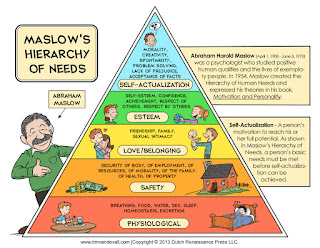The business dictionary defines grievance as "Specific complaint or formal notice of employee dissatisfaction related to adequacy of pay, job requirements, work conditions, other aspects of employment, or an alleged violation of a collective bargaining agreement."
In simple, Employee Grievance is a real or imagined form of dissatisfaction or complaint an employee experiences in the work place. If such grievances cannot be resolved in an informal manner such would be brought to the notice of the management in a formal manner of a grievance complaint. It is mandatory for all organizations to have a written grievance procedure which should be informative for the employees to know what they should do in order to make a grievance complaint.
Reasons for Employee Grievances:
Employee Expectations not been met
Employees expect that employers will treat them reasonably, fairly and consistently. In the event that any of these expectations are not met employees may grieve.
Eg- If the management does not act fairly towards all employees and does not maintain transparency in their decisions.
Poor Communication resulting in lack of Employee Engagement
Due to not communicating the employer expectations and creating the psychological contract with the employee initially, grievances tend to arise later on in the employment relationship.
Personality Traits
This is another main reason for grievances, since the workforce of an organization will consist of combination of people with different personality traits. Thus there could be personalities which tend to create grievances for the minor points (Eg- If their proposals on a certain project are not executed) which in turn would also create grievances for the rest of the workforce dealing with him/her.
Weak Leadership
Leadership plays a key role in employee engagement. If this responsibility is not been shouldered by ones immediate supervisor/team leader/manager, the employee would be demoralized and one may tend to lose interest and grieve.
Unsafe Workplace
According to Abraham Maslow on his Hierarchy of Needs which identifies the needs of humans, which are drivers of motivation for humans, Safety is the second most searched need by humans. Thus the workplace should offer all forms of safety starting from security of body, employment etc. And if an employer fails to meet this need of employees they would tend to be grievant.
Discrimination
This could be in the form of Direct Discrimination or Indirect Discrimination.
"Direct discrimination takes place when a person is treated less favourably than others are, or would be, treated in similar circumstances."(Armstrong, 2006)
"Indirect discrimination takes place when, whether intentionally or not, a condition is applied that adversely affects a considerable proportion of people of one race, nationality, sex, sexual orientation, religion or marital status, those with disabilities, or older employees." (Armstrong, 2006).
Discrimination is a major cause in creating grievances.
Bulling and Harassment
This is also identified as a reason for turnover by Armstrong in his book of Human Resource Management Practice. Policies should be brought up by employers in order to eliminate harassment of all kinds from the work environment by promoting ethical practices within the organization.
Structural/Organizational Change
Changes of organization structure may result in employees having to change the reporting structure, organizational policies and procedures etc, thus disrupting the traditional work flow of employees. This is also identified as a cause of grievances.
Unattended grievances result in employee demotivation, dissatisfaction, low productivity, absenteeism etc. and on the long run collective disputes. Thus managing employee grievances it is a crucial point and should be handled carefully and in accordance to a company policy and procedure. Mainly there are two methods for grievance handling procedures;
1) Open Door
This method is used in small organizations where the managers know all employees and their context of work and environment of work. Here any employee has the ability to bring their grievances forward to managers directly. However this approach is not suitable for large organizations.
2) Step Ladder
In this method the grievance originator reaches the highest level management in a step- wise procedure and grievances does not meet the top level at once.
General Grievance Handling Procedure;
(Howell,2014)
In conclusion, there are many factors for employee grievances, out of which action could be taken by employers to eliminate some factors, while others are based on the employee, again where employers could attempt to minimize the impact from such factors. Taking quick action in Accepting Grievance, Investigation and Decision making will provide a great employee experience, and build a strong employment relationship.
References
Armstrong, M.(2006) Human Resource Management Practice.10th edition.
London:Kogan Page Limited.
Business Dictionary. Grievance[online] Available from:http://www.businessdictionary.com/definition/grievance.html [Accessed 9 November 2017]
Chimoria, B.(2016) Employees Grievances: Reasons/Causes, Forms, Handling Procedure[online] Available from:http://www.wisenepali.com/2016/02/employees-grievances-reasonscauses.html [Accessed 12 November 2017]
GOV.UK. Handling an employee's grievance [online]Available from:https://www.gov.uk/handling-employee-grievance[Accessed 9 November 2017]
GOV.UK. Handling an employee's grievance [online]Available from:https://www.gov.uk/handling-employee-grievance[Accessed 9 November 2017]
Howell, J. (2014) Disciplinary & Grievance Handling [online] Available from:https://www.slideshare.net/PublicSpeakingMojo/ss-disciplinary-presentation-030714 [Accessed 13 November 2017]
Management Study Guide. Employee Grievance - Effective Ways of
Handling Grievance
[online]
Available from:http://www.managementstudyguide.com/employee-grievance.htm[Accessed
8 November 2017]
Storify.com Maslows
Hierarchy of Needs [online]
Available from:https://storify.com/CLAU88HOTMAIL/maslow-s-hierarchy-of-needs
[Accessed 13 November 2017]
Storify.com Maslows Hierarchy of Needs [online] Available from:https://storify.com/CLAU88HOTMAIL/maslow-s-hierarchy-of-needs [Accessed 13 November 2017]












